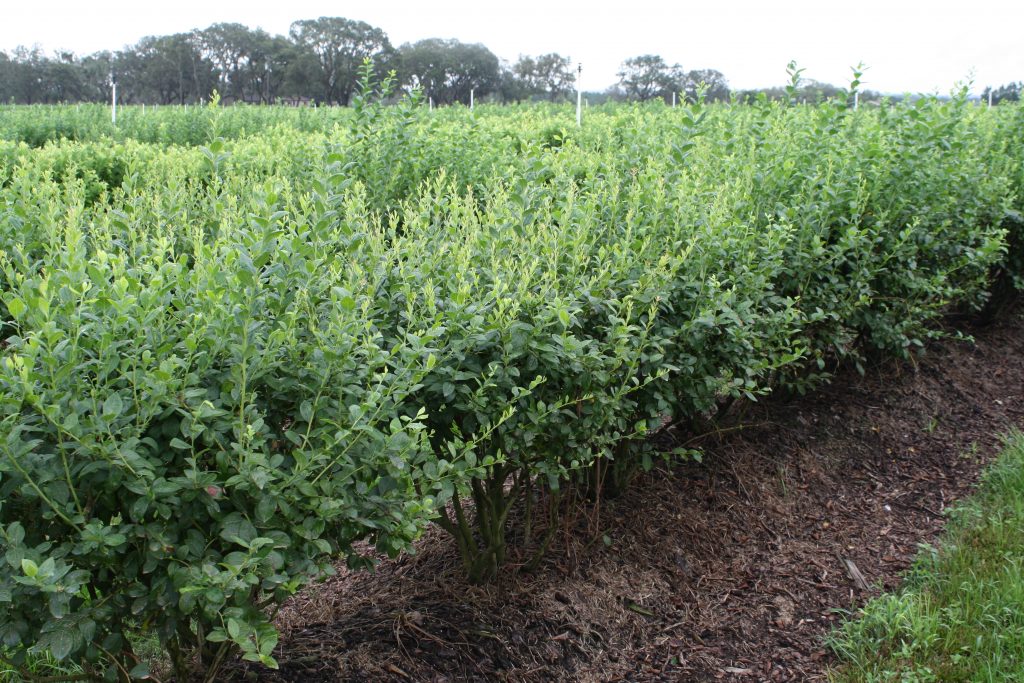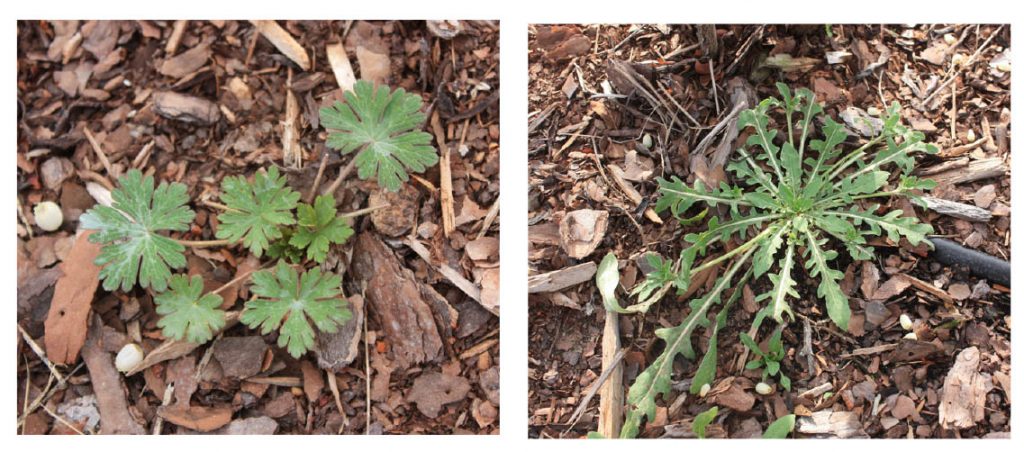
By Peter J. Dittmar
Weeds are problematic throughout the entire year in Florida. Annual weeds (separated into summer and winter annual weeds) germinate, grow and produce seeds in a single year. Summer annual weeds begin to germinate in March when temperatures begin to warm. Winter weeds begin to germinate when temperatures are cool (around October) and continue to emerge through the winter months.
A flush of weed growth occurs at the beginning of a new blueberry season. However, not all weeds break dormancy at the same temperature, and some weeds wait for other optimal growing conditions such as adequate rainfall or additional light after taller weeds are removed. So, the weed seed will be germinating through the entire season. Herbicide selection can be based on expected times of greatest weed emergence.
PRE-EMERGENT HERBICIDES
Two products with long periods of control are flumioxazin (Chateau) and indaziflam (Alion). These products can be used for spring weed control when long preharvest intervals restrict the use of many herbicides when fruit is present. The other optimal time for these herbicides is for control right before the emergence of winter annual weeds.

Many growers have relied on one of these two products as their only method of pre-emergent weed control, causing a shift in their weed spectrum to weeds that are not controlled by these herbicides. Therefore, the inclusion of another pre-emergent herbicide is vital.
Simazine, diuron and oryzalin are active ingredients that have a very broad grass and broadleaf weed spectrum of control. Napropamide (Devrinol) and mesotrione (Callisto) have a narrower weed spectrum of control but are extremely important when certain weed species are in the field. A pre-emergent herbicide should always be tank-mixed with a post-emergent herbicide for broader control.
POST-EMERGENT HERBICIDES
All herbicides are limited to the amount of active ingredient per acre or number of applications each year. Growers should take caution to not use all the allowed amounts on the spring annual weeds, which would leave no options later in the year when winter annual weeds begin to emerge.

Broad-spectrum post-emergent herbicides control broadleaf and grass weeds. Paraquat and diquat are contact herbicides. Spray drift to the lower leaves of the plant using these products will appear as small brown spots. Glyphosate is important for perennial weeds because it can translocate to the underground structures for greater control. However, contact with lower blueberry leaves or green bark may lead to translocation of the herbicide to the new growth of blueberry leaves, resulting in chlorosis (yellowing) and narrow leaves.
If the predominate weed species is grass, growers should consider a grass herbicide like clethodim (Clethodim, Select) or sethoxydim (Poast). These herbicides will not control broadleaf weeds but are important tools when the greatest weed pressure is from grass weeds.
Organic herbicides are post-emergent and must be applied when weeds are small and succulent. Many organic herbicides work by removing the outer layer of wax and causing the weed to lose water. If the weed has aged or is under stress, then the amount of control is decreased.
NONCHEMICAL WEED CONTROL
Any weeds that are not controlled by an herbicide must be controlled by another method. A single Palmer amaranth weed can produce 100,000 to 500,000 seeds. If a pre-emergent herbicide provides 99% control, then 1,000 to 5,000 seeds will still germinate, and some weed seeds can lay dormant for three to five years.
Growers should mow weeds before or during flowering to reduce the scattering of seeds. If the weeds have already begun to develop seeds, then mow using bags or remove weeds by hand to the edge of the field. Be sure to clean mowing equipment to prevent the spread of seed from one field to the next.
CONCLUSION
Annual weeds are classified as summer or winter annuals. Many times, expectations are that once conditions are favorable, then weeds will emerge. However, a weed management control strategy should be year-round, as conditions change for optimal weed growth.
Before spring annual weeds emerge, select a pre-emergent herbicide with long residual control, tank-mixed with a post-emergent (and possibly a second post-emergent) herbicide if weeds are prolific enough to hinder harvest. After harvest, a different pre-emergent herbicide (tank-mixed with a post-emergent herbicide) should be applied, with an additional post-emergent herbicide used later in the summer. If conditions are very rainy during the summer, then another pre-emergent herbicide may be required. Just prior to the emergence of winter annual weeds, the last pre-emergent herbicide, tank-mixed with a post-emergent herbicide, should be applied.
For additional information on blueberry weed control in Florida, see University of Florida Electronic Data Information Source Publication HS90, Weed Management in Blueberry (edis.ifas.ufl.edu/pdffiles/WG/WG01600.pdf).
Peter J. Dittmar is an associate professor at the University of Florida in Gainesville.









